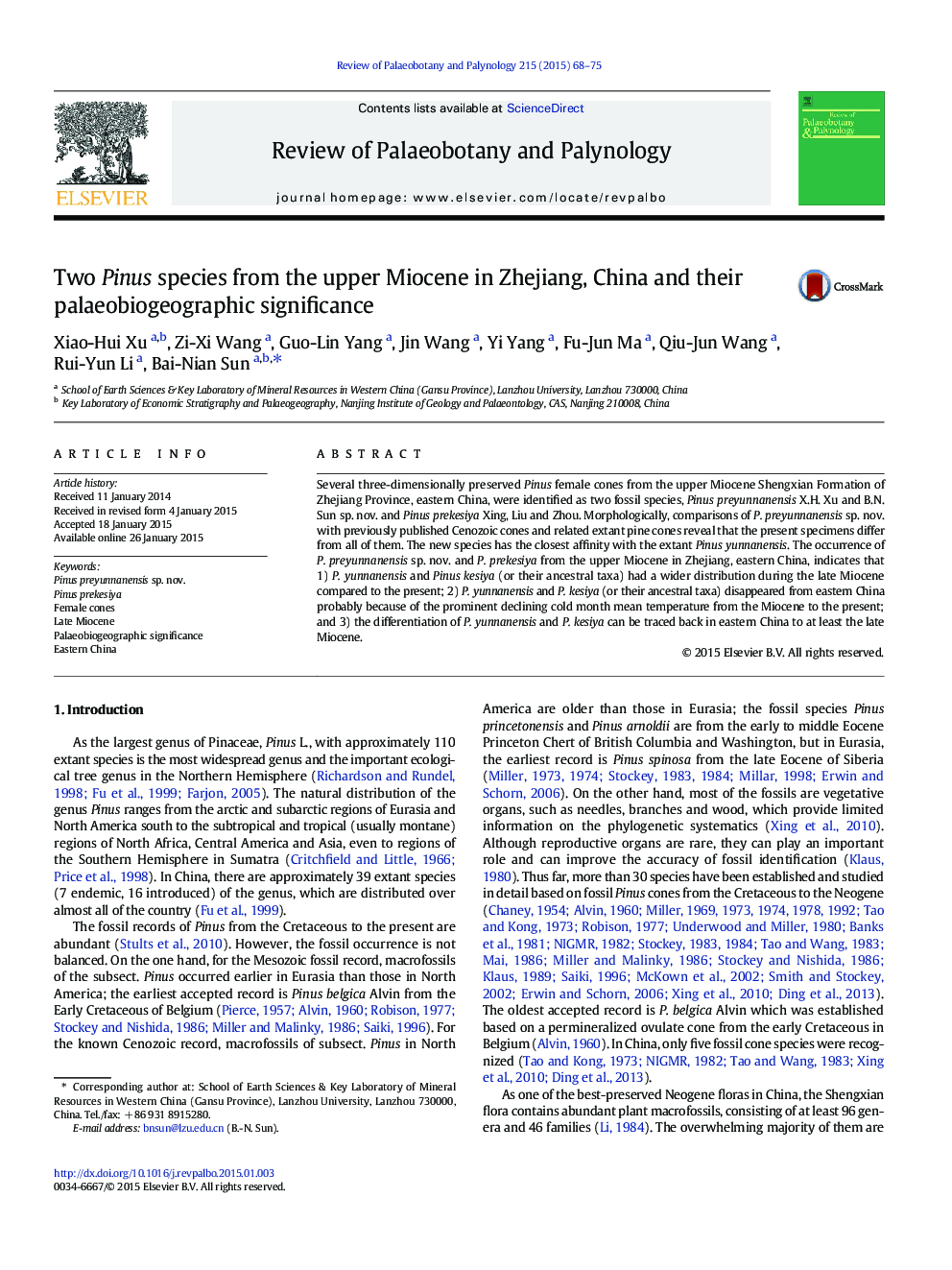| Article ID | Journal | Published Year | Pages | File Type |
|---|---|---|---|---|
| 4750249 | Review of Palaeobotany and Palynology | 2015 | 8 Pages |
•Two Pinus seed cone species are reported from the upper Miocene in eastern China.•Pinus preyunnanensis sp. nov. is identified and detailed comparisons were made.•Ancestral Pinus yunnanensis and Pinus kesiya had a wide distribution in the late Miocene.•The two species disappeared from eastern China because of the declining CMMT.•P. yunnanensis and P. kesiya may have diverged at least in the late Miocene.
Several three-dimensionally preserved Pinus female cones from the upper Miocene Shengxian Formation of Zhejiang Province, eastern China, were identified as two fossil species, Pinus preyunnanensis X.H. Xu and B.N. Sun sp. nov. and Pinus prekesiya Xing, Liu and Zhou. Morphologically, comparisons of P. preyunnanensis sp. nov. with previously published Cenozoic cones and related extant pine cones reveal that the present specimens differ from all of them. The new species has the closest affinity with the extant Pinus yunnanensis. The occurrence of P. preyunnanensis sp. nov. and P. prekesiya from the upper Miocene in Zhejiang, eastern China, indicates that 1) P. yunnanensis and Pinus kesiya (or their ancestral taxa) had a wider distribution during the late Miocene compared to the present; 2) P. yunnanensis and P. kesiya (or their ancestral taxa) disappeared from eastern China probably because of the prominent declining cold month mean temperature from the Miocene to the present; and 3) the differentiation of P. yunnanensis and P. kesiya can be traced back in eastern China to at least the late Miocene.
